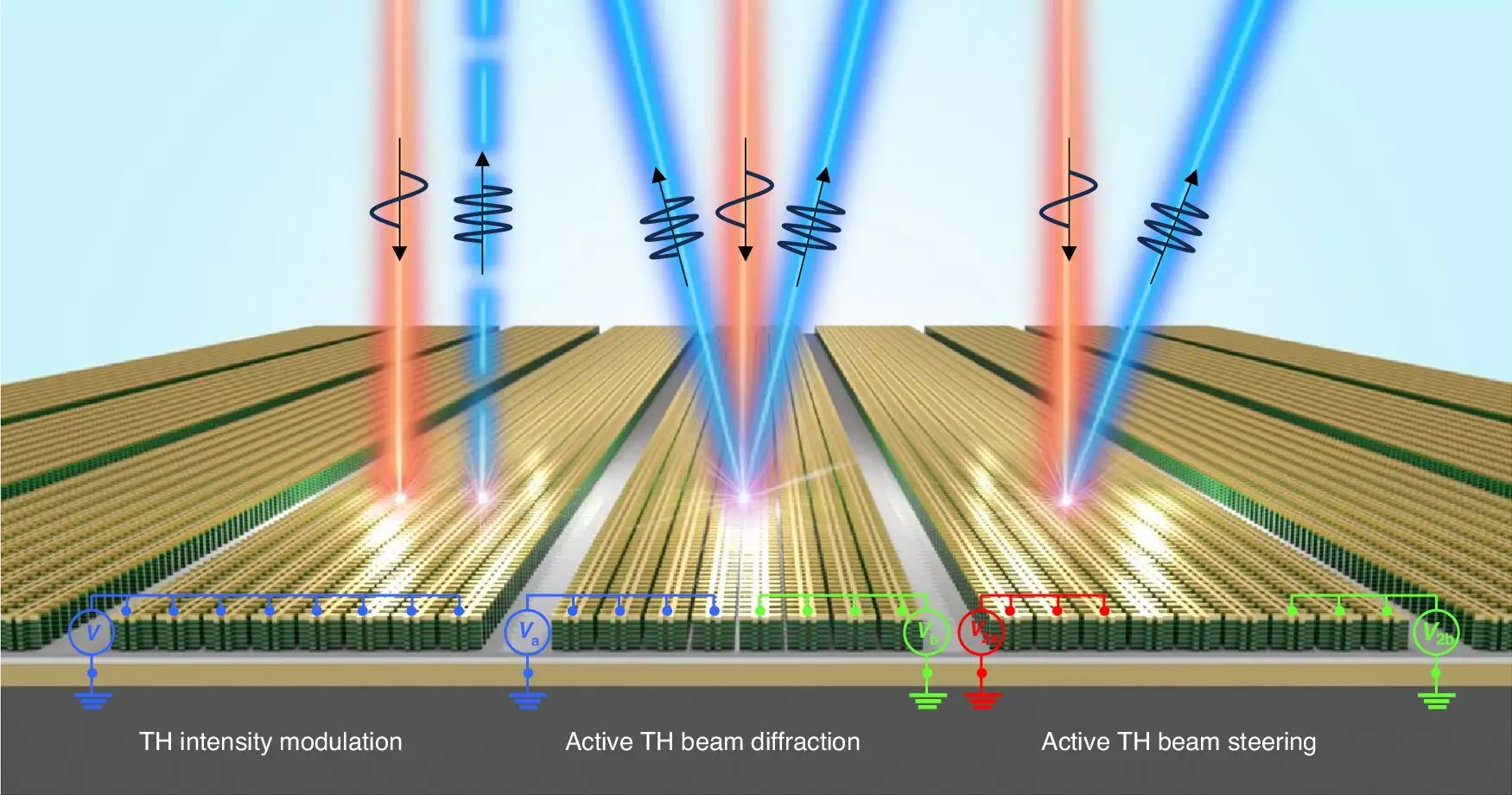In the ever-evolving realm of photonics, a groundbreaking innovation has emerged in nonlinear optical metasurfaces, showcasing the potential to revolutionize communication technologies and medical diagnostics. This transformative technology, built from structures that are smaller than the wavelength of light, offers a new frontier for enhancing performance in various applications, including quantum light sources. Recent work led by Professor Jongwon Lee of UNIST highlights the ability to achieve electrically tunable third-harmonic generation (THG), which is the result of integrating intersubband polaritonic metasurfaces with multiple quantum wells (MQWs). Such advances herald a new era where compact, versatile optical instruments may redefine how we interact with light.
The research published in Light: Science & Applications stands as a testament to the incredible achievements of Professor Lee and his team, who successfully demonstrated an astounding 450% modulation depth of THG signals. This breakthrough is further enhanced by the ability to suppress zero-order THG diffraction by an impressive 86%, allowing for precise manipulation of light without background interference. Moreover, the team’s advancements in phase tuning—exceeding 180 degrees—enable the manipulation of light in ways previously thought unattainable. Such capabilities point towards the creation of electrically adjustable flat optical elements that are not only efficient but also adaptable to various technological needs.
The implications of these developments in nonlinear optics cannot be overstated. Traditional laser systems, typically reliant on single-wavelength outputs, face limitations in information transmission capacity. In stark contrast, nonlinear optical systems facilitate the generation of multiple wavelengths from a single source, significantly expanding the potential for data transfer. A familiar application of nonlinear optics is the green laser pointer; however, the evolution of new metasurfaces proposes a leap towards ultra-thin laser devices, potentially as thin as a sheet of paper, utilizing materials thinner than human hair.
One of the most significant aspects of this innovation is the effective electrical control over nonlinear phenomena, a challenge that has persisted in the field. The metasurface developed by Professor Lee’s team not only allows for straightforward modulation but also introduces voltage-controlled second-harmonic generation (SHG). This capability empowers researchers to independently adjust both the intensity and phase of THG, which means the metasurface can manipulate not just the wavelength of light but also its amplitude and characteristics.
Professor Lee enthusiastically expressed the transformative potential of these findings, emphasizing the unprecedented control over light that their technology enables. This advancement has vast implications for numerous fields such as cryptography, dynamic holography, and next-generation quantum sensors. As researchers like Seongjin Park note, “The properties of our optical metasurface are defined by the semiconductor layer and metal structure,” underscoring the intricate design that underlies this technology.
The exploration of nonlinear optical metasurfaces opens expansive avenues not only for scientific inquiry but also for practical applications that could change how we perceive and utilize light. This innovative approach may redefine optical technology and set a new standard where previously disparate functionalities can be realized in elegant, compact designs. As the field progresses, we can expect further breakthroughs that could lead to revolutionary changes across multiple sectors.


Leave a Reply
You must be logged in to post a comment.